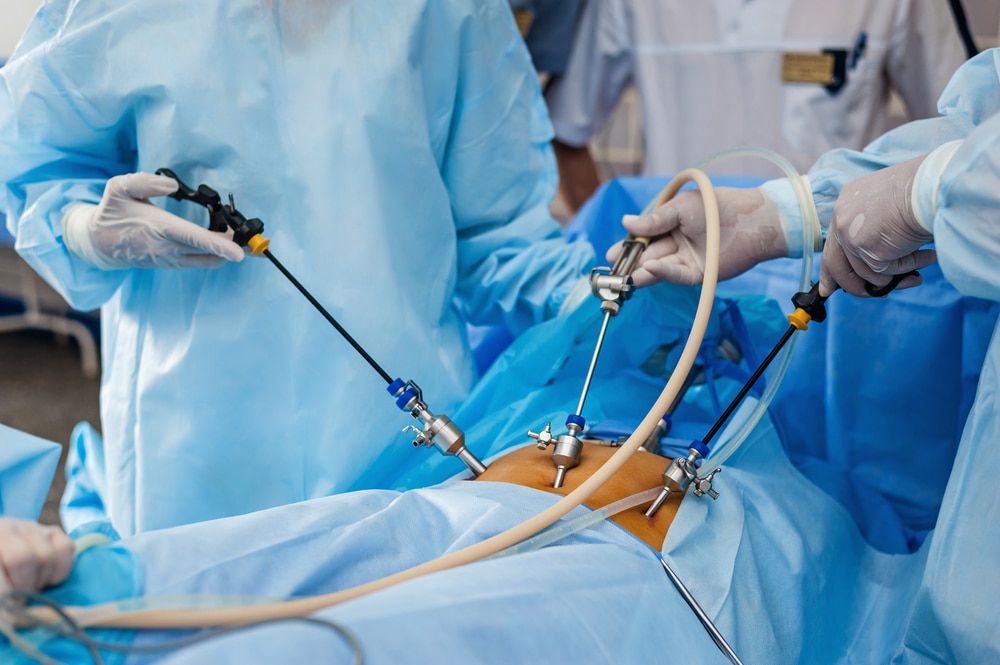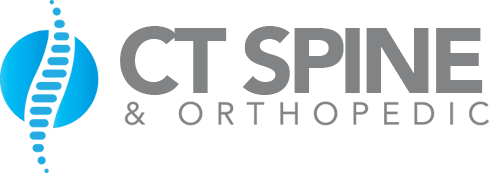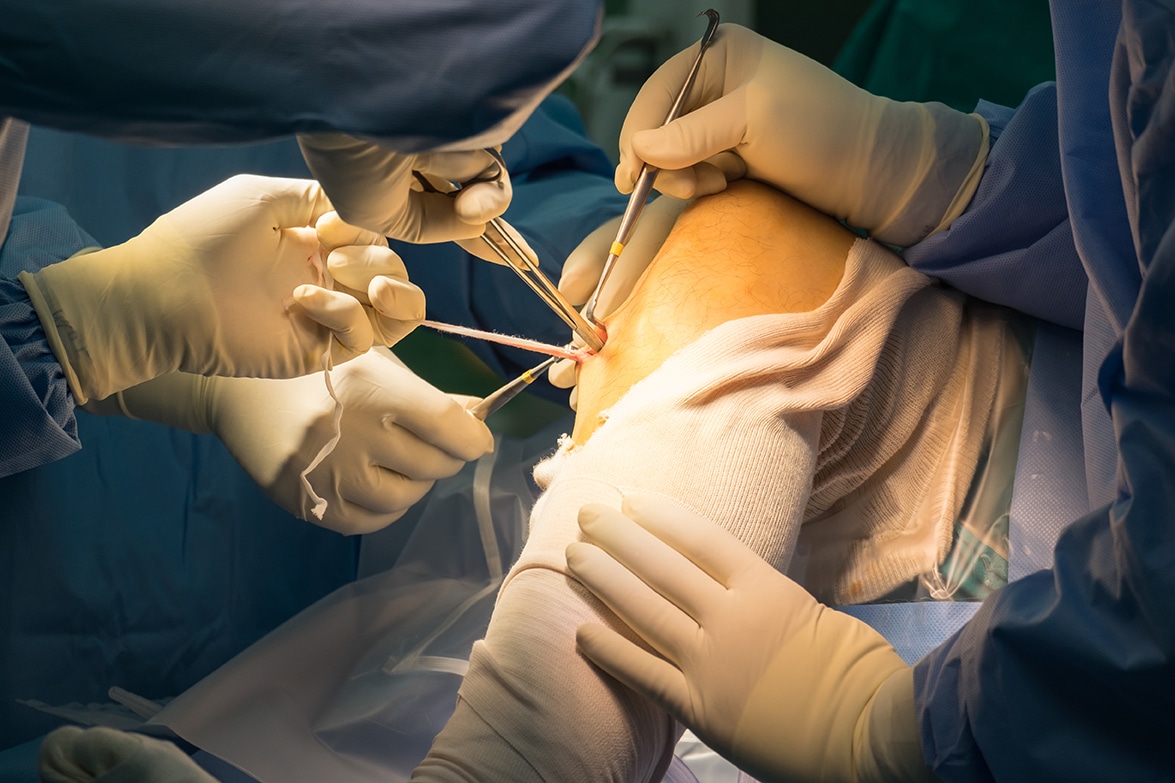The process of coccygectomy, the surgical removal of the coccyx or tailbone, requires meticulous pre-operative evaluation and preparation to ensure its success and mitigate potential complications. This discussion will elucidate the importance of comprehensive physical examinations, relevant medical history considerations, diagnostic imaging and other preparatory measures. We will also explore the nuances of patient readiness at home post-surgery. As we proceed, let’s bear in mind the significance of these procedures and protocols, and their impact on the surgical outcome and patient recovery.
Understanding Coccygectomy
Coccygectomy, a surgical procedure frequently performed to alleviate persistent coccydynia, involves the removal of the coccyx, or tailbone, often as a last resort after conservative treatments have failed. Understanding the coccyx anatomy is crucial before contemplating this surgery. The coccyx is the final segment of the vertebral column comprising three to five fused vertebrae. It plays a pivotal role in weight-bearing when sitting and provides an attachment site for several muscles, tendons, and ligaments.
When considering coccygectomy, surgical alternatives should be evaluated. These include non-surgical treatments such as anti-inflammatory drugs, physical therapy, and coccyx cushions. Invasive procedures like nerve blocks or injections may also be considered. However, when coccydynia becomes chronic and impervious to these interventions, coccygectomy may be the viable option.
The procedure is typically performed under general anesthesia. It involves a small incision over the coccyx, careful dissection to avoid injury to nearby structures, and removal of the coccyx. The wound is then closed in layers. Despite being a last recourse, coccygectomy has a high success rate in properly selected patients, significantly reducing pain and improving quality of life.
Identifying the Need for Coccygectomy
Identifying the necessity for coccygectomy requires careful consideration of several factors. One must first recognize the symptoms of coccydynia and seek professional medical advice to confirm the diagnosis. Following this, a thorough assessment of the patient’s condition by a medical professional is crucial to ascertain the need for coccygectomy.
Recognizing Coccydynia Symptoms
In the realm of orthopedic concerns, recognizing the symptoms of coccydynia can play a pivotal role in identifying the need for a coccygectomy. Pain management strategies are often the first line of defense, however, when these prove ineffective, coccydynia could be the underlying issue. Prevention of tailbone injury is essential, but once pain persists, specific symptoms may indicate coccydynia:
- Persistent pain in the coccyx area, particularly when sitting or transitioning from sitting to standing
- Discomfort during bowel movements or sex
- Deep ache in the tailbone area
- Pain that intensifies in cold or damp weather
These symptoms, combined with ineffective pain management, may indicate a need for further evaluation and potential coccygectomy as a next step in treatment.
Consulting Medical Professionals
Upon experiencing persistent symptoms of coccydynia and ineffective pain management, it is imperative to consult with qualified medical professionals who can accurately diagnose the condition and assess the need for a coccygectomy. A thorough medical evaluation should be conducted to determine the severity and origin of the pain. This may involve physical examinations, imaging studies, and possibly a sitting-versus-standing x-ray comparison. Post operative consultations are essential for discussing potential surgical outcomes and addressing patient concerns. During these consultations, alternative treatments such as physiotherapy, pain medications, or injections should also be thoroughly explored. A close collaboration between the patient and medical professionals will ensure a comprehensive understanding of the condition and help to determine the most beneficial course of action.
Assessing Coccygectomy Necessity
After a thorough evaluation of the patient’s condition and exhaustive exploration of alternative treatments, it may become clear that a coccygectomy, a surgical intervention, is the most effective solution for persistent, debilitating coccydynia. This decision is typically derived after pain management strategies have proven ineffective, and other surgical alternatives have been deemed unsuitable.
It is crucial to carefully consider the following factors:
- The severity and longevity of the patient’s coccydynia
- The patient’s response to conservative pain management strategies
- The patient’s overall health and ability to withstand surgery
- The potential risks and benefits of a coccygectomy versus other surgical alternatives
These considerations help ensure that a coccygectomy is truly the most appropriate and beneficial treatment option for the patient.
Pre-Operative Physical Examination
A thorough physical examination, pivotal in the pre-operative evaluation for coccygectomy, encompasses a detailed assessment of the patient’s overall health status, particularly focusing on the lower back and coccyx area. This evaluation is crucial in identifying any potential surgical risks and in informing the need for diet modifications and exercise limitations.
The physical examination primarily seeks to assess the patient’s cardiovascular and respiratory status, essential to endure the rigors of anesthesia and surgery. Additionally, a comprehensive assessment of the patient’s nutritional status is required to ensure optimal healing post-surgery. Therefore, potential diet modifications may be recommended to enhance nutrition.
Furthermore, any physical activity that could exacerbate the patient’s condition is evaluated. This includes investigating the patient’s daily activities and exercise habits that could strain the coccyx area. Consequently, exercise limitations may be suggested to minimize discomfort and prevent further complications.
Relevant Medical History Evaluation
In the pre-operative evaluation for coccygectomy, a rigorous investigation of the patient’s relevant medical history is paramount to identify any pre-existing conditions or past surgical procedures that could impact the upcoming surgery. The physician should pay special attention to previous interventions in the pelvic area, any persistent chronic diseases, and the patient’s response to previous pain management strategies.
This evaluation should include, but is not limited to:
- A comprehensive review of medication regimen, focusing on pain relievers and any other drug that could interact negatively with anesthesia or post-operative medication.
- An examination of previous hospitalizations or surgeries, focusing on potential complications that could recur or affect the current surgery.
- A thorough investigation of the patient’s dietary habits and nutritional status, as dietary considerations play a vital role in wound healing and recovery.
- An assessment of the patient’s psychological status, as a positive mental attitude can significantly influence pain perception and recovery speed.
Diagnostic Imaging and Tests
Before proceeding with a coccygectomy, a series of diagnostic imaging and tests are crucial to accurately map the surgical area and evaluate the patient’s overall health status. In particular, radiological findings are of paramount importance. These findings provide a clear view of the coccyx and surrounding tissues, which is essential in planning the surgical approach. Radiographic studies such as X-rays, computed tomography (CT) scans, or magnetic resonance imaging (MRI) can show any structural abnormalities, fractures, tumors, or other pathologies that may affect the surgical procedure.
In addition to imaging studies, pre-operative tests are necessary to assess the patient’s general health. These may include blood tests to check for conditions such as anemia or coagulation disorders, which could present surgical contraindications. Other tests may be indicated based on the patient’s medical history and physical examination.
It is also necessary to consider any significant radiological findings that may influence the surgical approach or reveal contraindications to surgery. These considerations are particularly crucial in coccygectomy, where the close proximity of the coccyx to critical structures like the rectum and sacral nerves necessitates careful pre-operative planning.
Discussing Potential Risks and Complications
Having carefully considered the pre-operative imaging and tests, it’s equally crucial to address the potential risks and complications associated with a coccygectomy. As a surgical procedure, a coccygectomy is not without risk, and diligent risk mitigation strategies are needed.
- Wound infection: Despite sterile techniques, there’s a small chance of developing an infection post-surgery.
- Hematoma or seroma formation: The accumulation of blood or serous fluid can occur in the surgical area.
- Persistent pain: Some patients may continue to experience discomfort even after surgery.
- Neurological complications: Rarely, nerves may be damaged during surgery, leading to numbness or weakness.
Complication management is paramount in medical practice, and patients should be fully apprised of potential risks before deciding to undergo surgery. In addition to the above, there is a small risk of complications related to anesthesia. These could include reactions to medications or breathing problems. It’s important that patients understand these risks and that healthcare professionals are prepared to manage these potential complications. This information can assist in setting realistic expectations and fostering a trustful patient-doctor relationship.

Mental Health Assessment Before Surgery
The mental health assessment prior to a coccygectomy operation serves a critical role in identifying and addressing patients’ pre-operative anxiety and depression. This evaluation provides an opportunity to identify potential psychological stressors, which if unmanaged, can adversely affect surgical outcomes and hamper post-operative recovery. The subsequent sections will comprehensively discuss the understanding of pre-surgery anxiety, and strategies to manage pre-operative depression, thereby facilitating a more effective and patient-centric surgical pathway.
Understanding Anxiety Pre-Surgery
Assessing a patient’s mental health, specifically their level of pre-surgical anxiety, is a crucial aspect of the pre-operative evaluation for a coccygectomy. Anxiety can affect the patient’s overall recovery and their ability to cope post-surgery. Therefore, learning anxiety coping mechanisms and stress reduction techniques are important parts of the preparation process.
- Anxiety coping mechanisms may include guided meditation, deep breathing exercises, and cognitive behavioral therapy.
- Stress reduction techniques such as progressive muscle relaxation, visualization, and establishing a strong support network can be beneficial.
- Anxiety can increase the perception of pain, potentially complicating post-operative recovery.
- Understanding and addressing pre-surgical anxiety can lead to improved patient outcomes and a smoother recovery process.
Addressing anxiety proactively can, therefore, significantly improve the patient’s surgical experience and recovery.
Managing Pre-Operative Depression
Much like anxiety, depression can also play a significant role in a patient’s pre-operative mental health status, thus necessitating careful evaluation and management strategies for those preparing for a coccygectomy. Depression coping strategies should be tailored to the individual, considering their personal context and the stressors associated with surgery. Psychotherapy, a key component of these strategies, can provide emotional support, improve resilience, and help patients develop effective stress management techniques. Concurrently, medication management is crucial. Antidepressants, primarily Selective Serotonin Reuptake Inhibitors (SSRIs), may be employed, under close monitoring for potential side effects and interactions. Finally, encouraging a supportive environment, positive lifestyle modifications, and engagement in activities that promote wellbeing can further help manage pre-operative depression.
Lifestyle Adjustments Prior to Surgery
Several lifestyle modifications may be necessary to ensure optimal outcomes from a coccygectomy, particularly in the weeks leading up to the surgical procedure. These primarily involve dietary modifications and exercise limitations.
Dietary modifications are critical. A balanced diet high in protein, vitamins, and minerals can strengthen the immune system, optimize healing, and aid in maintaining a healthy weight. Avoiding alcohol, caffeine, and smoking is also advised, as these can interfere with anesthesia and prolong recovery.
Exercise limitations should be discussed with the surgeon. While some physical activity can help improve overall fitness and resilience, activities that could exacerbate coccyx pain or contribute to further injury must be avoided.
Additional lifestyle adjustments to consider:
- Regular and adequate sleep for enhanced healing and recovery.
- Stress management techniques to improve mental and emotional well-being.
- Regular check-ups to monitor overall health and detect potential complications.
- Medication adjustments, as some drugs may need to be discontinued or adjusted.
Preparing Your Home for Recovery
In anticipation of the post-operative recovery period, it is prudent to meticulously prepare your living environment to facilitate a smoother convalescence. As part of the preparation, consider making home modifications that will reduce the need for movements that might exacerbate post-surgical discomfort. This could include arranging frequently-used items within easy reach, and minimizing the use of stairs by setting up a recovery area on the ground floor.
Recovery aids can significantly enhance your comfort and mobility during this period. For instance, utilizing a raised toilet seat can decrease strain and pain during bathroom use. A grabber tool can eliminate the need for bending or stretching to pick up items. Additionally, a coccyx cushion provides specialized support to alleviate pressure on the coccyx when sitting.
Moreover, ensuring the availability of appropriate post-operative care is crucial. This can range from hiring a professional caregiver to enlisting the help of a family member or friend. It’s also beneficial to stock up on easy-to-prepare meals and necessary medications ahead of time to minimize errands and stress post-surgery.
Final Pre-Operative Consultations
Having taken steps to prepare your home for post-surgery recovery, the final stage before the procedure itself is to engage in thorough pre-operative consultations with your medical team. These consultations are crucial for ensuring optimal patient communication and a clear understanding of surgery costs.
During these consultations, several vital aspects will be discussed:
- Medical History Review: Your surgeon will review your medical history to confirm your suitability for the procedure and to identify any potential risks or complications.
- Surgery Details: You will receive a detailed explanation of the procedure, including expected outcomes, potential risks, and recovery timeline.
- Cost Discussion: Transparent dialogue about the surgery costs is vital for avoiding unexpected expenses. This includes the surgeon’s fee, hospital charges, and potential costs for any additional required medical services.
- Consent: A critical part of patient communication is ensuring that you fully understand and consent to the procedure. You will be asked to sign a consent form that demonstrates you understand and accept the risks involved.
This final stage of pre-operative preparation is designed to ensure you are fully informed and ready for your coccygectomy, enhancing your overall comfort and confidence as you approach your surgery date.
The Day Before Surgery: Final Preparations
Finalizing your preparations the day before your coccygectomy is a crucial step towards ensuring a smooth surgery experience and optimal recovery. The necessary tasks will involve dietary adjustments and confirming travel arrangements, among other things.
Firstly, dietary adjustments are of paramount importance. You will likely be instructed to fast for a certain period before the surgery. This typically involves no solid food after midnight, although clear liquids may be permissible up to a few hours before the procedure. Adherence to these guidelines is critical to minimize the risk of aspiration during anesthesia induction.
Secondly, double-check your travel arrangements to ensure that you have reliable transportation to and from the hospital. If you’re using public transportation, confirm the schedule and the route. If a friend or family member is driving you, remind them of the time and location. Remember, you will be under the influence of anesthesia post-surgery, making it unsafe for you to drive yourself home.
Lastly, gather all necessary paperwork, including medical records and insurance information, and place them in an easily accessible location. This will expedite the check-in process on the day of the surgery, reducing stress and facilitating efficiency.
Morning of the Surgery: What to Expect
Upon awakening on the day of your coccygectomy, it is essential to understand the sequence of events that will unfold as you prepare for the surgical procedure. There are several steps to take to ensure optimal readiness and comfort during this critical time.
These include:
- Surgery Attire: The patient should wear loose, comfortable clothing that is easy to remove and put on. Surgical gowns will be provided at the hospital.
- Fasting: As per the surgeon’s instructions, you should avoid eating or drinking for a certain period before the surgery.
- Medications: Any necessary medications should be taken as per prescribed with a small sip of water.
- Arrival at the Hospital: Arrive early to allow ample time for admission procedures, anesthesia consultation, and preoperative preparation.
It is also crucial to take note of post-surgery nutrition. A balanced diet with adequate protein intake will aid in wound healing and recovery. Hydration is also key, as it promotes optimal body function and helps manage post-operative discomfort.
Frequently Asked Questions
What Is the Typical Duration of the Coccygectomy Surgery?
The typical duration of a coccygectomy surgery varies but generally lasts between 1 to 2 hours. However, it can extend based on surgical complexities, individual patient factors, surgery risks, and the effects of anesthesia.
Are There Any Specific Dietary Restrictions to Follow Post-Surgery?
After coccygectomy, maintaining proper nutrition and hydration is crucial for recovery. While specific dietary recommendations may vary, a balanced diet rich in proteins and vitamins, along with adequate water intake, is generally encouraged post-surgery.
What Kind of Physical Therapy Will Be Required After the Surgery?
Post-surgery physical therapy typically involves pain management techniques and mobility enhancement exercises. The former alleviates discomfort while the latter aids in restoring function and strength to the affected area, facilitating a quicker recovery process.
How Long Is the Average Hospital Stay Following the Procedure?
The average hospital stay following coccygectomy varies, typically between 2-4 days. This duration allows for effective pain management and emotional support as the patient begins their initial recovery from this significant surgical procedure.
Are There Any Alternative Treatments to Coccygectomy?
Yes, there are alternative treatments to coccygectomy. These primarily include pain management alternatives such as medications and physiotherapy, and non-surgical interventions like injections or nerve blocks targeted at the coccyx area.

